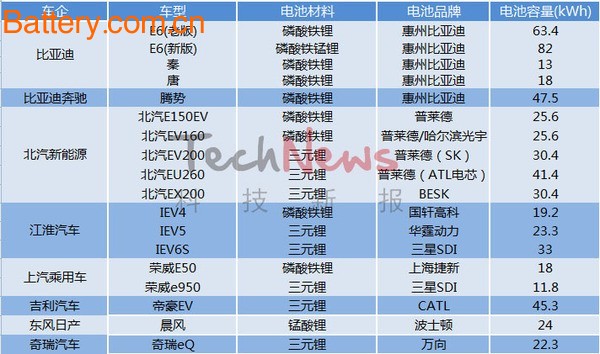Recently, the media reported that domestic car manufacturers using Korean batteries are low-key replacement battery manufacturers, Samsung battery incidents cause safety concerns for car companies, and new energy vehicles using Korean batteries may not be able to apply for state subsidies, which is what the above-mentioned car companies want The main reason for replacing battery manufacturers. Under this relationship, domestic power battery companies have ushered in development opportunities. However, the industry pointed out that although the policy is conducive to the development of domestic battery companies, but limited by the differences in power battery technology, domestic power battery companies are really bigger and stronger, still a huge challenge. Ternary lithium battery VS lithium iron phosphate battery , domestic new energy car battery line on both sides Since the Tesla electric car has achieved high cruising range with the lithium battery of the ternary material, the ternary lithium battery has become the mainstream battery route for foreign new energy vehicles. In contrast, China's new energy vehicle market has not yet been "firm" and faces a "difficult" choice. â–² Domestic mainstream new energy passenger car battery route inventory As can be seen from the above figure, in the field of new energy passenger vehicles, the ternary lithium battery and the lithium iron phosphate battery are almost evenly matched. Lithium manganate batteries and lithium titanate batteries and nickel-metal hydride batteries other than charts have a very low level of presence in the domestic new energy vehicle market. Among them, BAIC, SAIC and Geely Automobile are taking the route of “lithophosphate lithium battery and ternary lithium batteryâ€. For the sake of battery life, these car companies prefer the ternary lithium battery. BYD is firmly supportive of lithium iron phosphate battery, which is evident from the use of lithium iron phosphate batteries from all new energy vehicles of BYD and the electric vehicles launched by Mercedes-Benz. Compared with the ternary lithium battery, the lithium iron phosphate battery has better stability and is less prone to safety accidents such as spontaneous combustion and explosion. Since the advantages and disadvantages of both types of batteries are extremely obvious, the industry has been arguing about which battery routes to take for new energy vehicles. The hidden dangers of power batteries, how can battery companies break? The battle for power battery technology reflects the problem that enterprises (including car companies and power battery manufacturers) are fighting each other and cannot form synergies. This is not conducive to the improvement of domestic battery research and development capabilities, but also has a negative impact on the development of new energy vehicles. Judging from the technical roadmaps of the "Made in China 2025" key areas and the "Technology Roadmap for Energy Saving and New Energy Vehicles", the country has not clearly stated which kind of power battery, but only the indicators of the power battery (including the single Corresponding requirements have been put forward for bulk energy density, cost, key materials, etc. For example, the technical roadmap for the key areas of "Made in China 2025" requires that the energy density of power battery cells should reach 400 Wh / kg or more before 2025, the cost should be reduced to 0.8 yuan / Wh, and the system cost will be reduced by half to 1 yuan / Wh. . However, at this stage, neither the ternary lithium battery nor the lithium iron phosphate battery can reach this level. Taking cost as an example, the cost of two types of batteries in China is around 1.2 yuan/Wh, which is far from the target of 0.8 yuan/Wh. Therefore, the industry believes that the domestic power battery break, should first set aside the dispute, and the car companies to improve battery performance (including increase energy density, battery stability and charging speed, etc.), reduce battery costs, and finally, let the market decide which type of battery The route can become mainstream, and which battery manufacturers can become bigger and stronger.
Johnson Screen Sieve Plate is a stainless steel Filter Element and is used for screening and filtering. Johnson screen sieve plate is made of v-type wire and support rods rolling welded on the special welding machine. The filtration mode can be divided into two types: from the outside to the inside or from the inside to the outside.
To suit the need of customers, we can use many kind of metal material such as: 304, 321, 316 L, 904 L, duplex steel 2205, duplex steel 2207, Monel, and Hastelloy.etc.
Johnson screen sieve plate is widely used in many industries, such as screening, filtration, dehydration, desliming and other operations.
Johnson Screen Sieve Plate Metal Screen,Johnson Screen Sieve Plate,Stainless Steel Johnson Screen Sieve Plate,Johnson Well Screen Sieve Tube Xinxiang Shengda Filtration Technique Co., Ltd. , https://www.filtrations.nl
